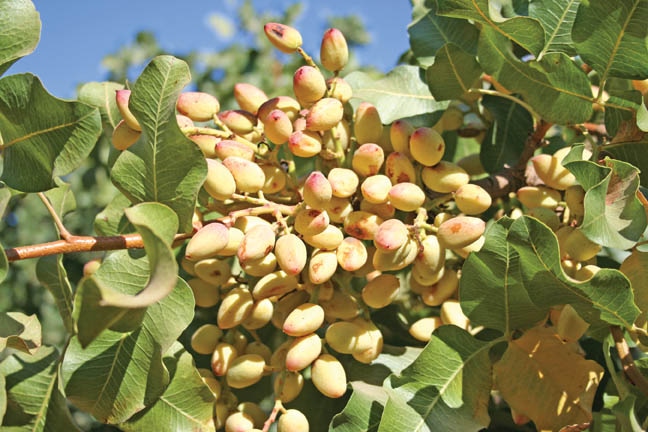
Pistachio nuts may not hit the ground at harvest, but there are other potential routes of contamination by pathogens.
“Consider everything that touches or impacts produce,” warned Linda Harris, food safety and technology specialist with the University of California Cooperative Extension, during the annual Statewide Pistachio Day event held in Visalia, Calif.
Even with the harvest advantage, there are other avenues to contamination including human, animal, and water; plus harvest and transport equipment.
Harris, who has focused on pistachio food safety research, says salmonella is the most common illness-causing pathogen found on pistachio nuts and it’s difficult to kill.
She pointed to a 2009 multi- state outbreak of salmonella poisoning linked to in-shell pistachios where two strains of salmonella - montevideo and senftenberg - were identified as causing illnesses in 11 people. These are the only two salmonella strains associated with pistachio nuts.
Harris said a survey of pistachios found in a processing stream found floaters with a higher level of salmonella contamination than sinkers, thus providing a clue to one source of salmonella contamination. Silo samples also revealed salmonella contamination traveling from the top to the bottom.
Patterns of salmonella contamination in pistachio nuts, she says, suggest a reservoir of the pathogen somewhere during pistachio production in the field. Labeling a pistachio processor as the single potential source of contamination is unlikely.
“I can’t eliminate orchards as a source,” Harris told the pistachio crowd. “Growers need to understand the importance of eliminating (production) risks.”
She pointed to soil amendments and water as potential sources of salmonella contamination in pistachio orchards. Harris said applying un-composted or inadequately composted manures to orchards can be a source of contamination when dust from those amendments come into contact with split nuts during harvest.
Water, including its use and source, are also important considerations. Harris says that while irrigation systems do not generally deposit water on tree canopies, other water uses make contact with pistachio nuts – for example with water used in foliar spray applications, especially close to harvest.
Harris says the new Produce Safety Rule under the Food Safety Modernization Act is designed to alert growers to avenues for pathogen contamination that could put consumers at risk. Preventative steps for growers include an assessment of safety risks, the implementation of practices, monitoring, and recordkeeping.
Assuring water quality could be the most difficult task. Harris urges pistachio growers to develop a water quality profile and to begin sampling to collect data. The profile will help growers understand the long- term microbial quality of the source water, and understand the appropriate uses for each source.
“Strategic selection of water sources is the best method of reducing risk,” Harris said.
Depending on pistachio production levels, growers have from one-to-four years to begin testing their water sources for pathogens and recording the results. Groundwater testing will be required four times during the growing season. Surface water testing for microbial quality must be done 20 or more times over a two-to-four-year period.
Harris says there are safety risks which growers may not be able to control. Pistachios are unique as the nuts are harvested at high moisture levels. Also, extended periods of time from shake to dump pose a risk if temperatures are higher than 90 degrees F.
There are points during harvest when management decisions can be made to reduce the risk of pathogen growth.
Birds and other wildlife can also be sources of salmonella contamination in orchards. There is no rule to eliminate vertebrate sources of contamination, Harris says, but if there appears to be a high density of a particular species then growers should take steps to reduce it.
Harris advised growers to develop farm food safety plans, investing in food safety training for employees, and be proactive with water quality assessments and record keeping.
About the Author(s)
You May Also Like




